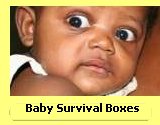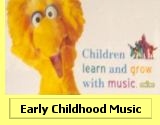 |
Contact usUnited CaribbeanDisaster Mitigation
Community Empowerment
Disaster Action Kids Club
The Body of Christ
|
home >>
school twinning >> after school club AIDS education talk by Mrs. Clare A. Kalkwarf D.M. Permission to use information from
This is a verbal transcription of the original sound track of a video recording
of a short AIDS talk for factory labourers at Loungefurn in Sithebe
|
|
|
How does the virus kill our white blood cells?
For people who don’t believe that the HI Virus exists I am going to proof to you now that it does:
What is it? It’s a virus. It’s a tiny tiny little germ that you can’t see. You have to look at it through a special microscope, through a special machine that makes it bigger and bigger. O.k.? And that is how this photograph was made, with a special machine. It’s smaller than the tip of a pin. I am sure you are sick and tired of hearing how AIDS is spread. Everybody is telling you “Use a condom! Don’t sleep around!” We are sick and tired of hearing it from people. Ya, the men are laughing! There are other ways to get HIV and that’s this Zulu tradition. What do you call it? Ukucaba! If that herbal doctor, the inyanga, is it? The inyanga goes, he has a line of little boys there, he goes with the same blade, that little boy, that little boy, that little boy, that little boy and that first boy is HIV-positive now they are all HIV-positive, because he has used the same blade for all those children. It’s the same with the circumcision. That’s why we must be extremely careful, right! It’s not only sex. It is sex, that’s the main problem, but it’s also through what the inyangas do. Please, if you go to those things, make sure that he uses a clean blade, o.k. for each person. Don’t let him come near you with a blade that has been used for another person! O.k.? It’s also passed on from mother to child. It used to be 30% of pregnant women who gave birth to HIV-positive children. It has now gone up to 40%! So those of you who are HIV-positive, or those of us who are HIV-positive please let’s make an informed decision about whether or not we should still have children, at least until the government makes a decision on the retroviral drugs for the pregnant mothers! . There is a newspaper cutting [Sunday Times May 17 1998, page 12, We find the weak spots in a selection of condoms. Not one of four leading brands manages to pass all our tests] and on there one, two, three, four condoms. The SABS, the South African Bureau of Standards in Pretoria went to the shops and they bought condoms off the shelf, they took the ones that are handed out by the clinics and they did a test and more than one third failed the test. More than 30 out of 100 condoms had holes in them and you think that you are safe? Say “Ah, no problem, I can sleep around as long as I use a condom!” a-ah! Be careful! Be careful! That’s a false sense of security. It’s not that a condom is absolutely safe. There is no such thing as safe sex! The only way to be absolutely safe is to say “No, thank you, I don’t want to sleep around!” Change your way of life! That’s the only safe thing! O.k.? Condoms do help, especially if a man and a wife are both HIV-positive, because you can re-infect yourself. Every time you have sex with somebody, who is HIV-positive, you are putting more HI Virus into your blood. So you are making your life shorter and shorter. I have had couples come to me and say “but it doesn’t matter. We are both positive. It doesn’t matter if we have unprotected sex.” A-ah! Every time you are adding more and more virus to your blood, which means you are killing off more and more white blood cells as the time goes by and it shortens your life so much. What I ask you ladies and gentlemen, and I am so happy the men decided to come today, if you think, that you have been exposed to the HI Virus, go and have a test! People say “why must I have a test? If I am positive I am going to die anyway.” Sure, but you can still live for another twelve to fifteen years! We had a lady came into our hospice. She had twins who were two years old. She came into the hospice to die and through giving her good food and medication we sent her home with her two-year-old twins who were not positive. She came back to us last Christmas with her twins to show us how healthy she was. Only through eating good food and taking the medication that she was supposed to take. And then we can give that lady until her twins are fourteen years old. Isn’t it worth it? For those twins they have their mother until they are in their teens is really worthwhile. And so I ask you, please, go and have a test, not so much for your sake, yes for your sake, but for your family’s sake, for your husband, for your wife, children, make sure that you are there for them for as long as possible! And please talk to your husbands and wives about the problems, if you are HIV-positive you must tell your partner, whoever your partner is, please tell them!
I want to show you a picture and I was given permission by the granny of this child, because the mother of that child had died in our hospice and the granny brought the baby to us and said, “The baby is also dying.” And she said to me, “if this child’s death can have a positive effect by saving somebody, it’s worth it.”
This page is part of "An everlasting brotherhood" - Preparations for a video film about the Brotherhood of Blessed Gérard

Permission requested to use this article as part of our HIV/AIDS education program in the Caribbean. |
| Copyright © 2022 www.UnitedCaribbean.com. All rights reserved. Disclaimer Click to Contact us |

 What
are the first questions we always have?
What
are the first questions we always have?















 That’s a photograph made many many many times bigger than normal.
That’s an HI Virus that is in the body of people who are positive.
And that’s the thing that kills off your white blood cells. That’s
what it looks like, that’s a photograph of it, a real HI Virus!
That’s a photograph made many many many times bigger than normal.
That’s an HI Virus that is in the body of people who are positive.
And that’s the thing that kills off your white blood cells. That’s
what it looks like, that’s a photograph of it, a real HI Virus!

